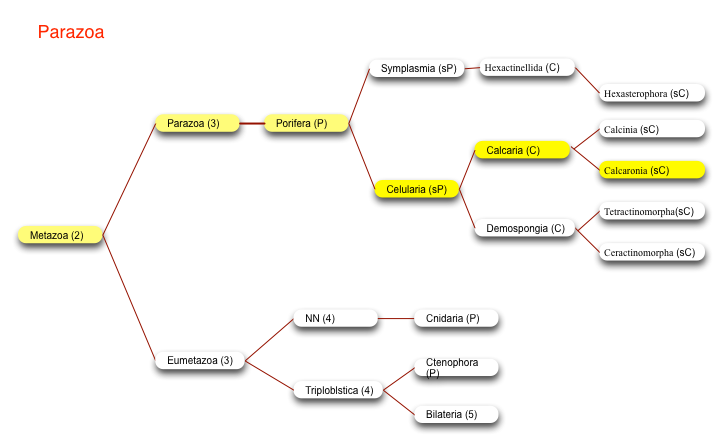
- Phylum Porifera
- Subphylum Cellularia
- Class Calcarea: Calcareous sponges (Figure 1A). Spicules of mineral skeleton composed entirely of calcium carbonate laid down as calcite; skeletal elements often not differentiated into megascleres and microscleres; body with asconoid, synconoid, or leuconoid construction; all marine.
- Subclass Calcinia: Free‑living larvae are hollow and flagellated, and can become solid parenchymula‑like structures by cellular ingression; choanocyte nuclei located basally; flagellum arises independent of nucleus. (e.g., Clathrina, Dendya, Leucaltis, Leucetta)
- Subclass Calcaronia: Free‑living larvae are partly flagellated amphiblastulae; choanocyte nuclei apical; flagellum arises diect ly from nucleus. (e.g., Amphoriscus, Scypha* [=Grantia], Lelapia, Leucandra, Leucilla, Leucosolenia*, Scypha [=Sycon]) This group is still unresolved; the histology of the mesophyl, the arrangement of the choanocyte chambers, and the occurrence of a parenchymula larva all suggest a possible relationship to the Demospongiae.
Click to view Images of living calcareous sponge
September 22, 2013

